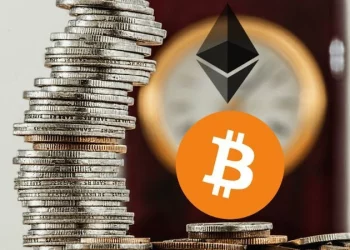In May 2025, a major piece of news caused a stir in the global financial market: US President Donald Trump announced that the United States and the United Kingdom had reached a trade agreement. As a result, the price of Bitcoin has approached the $100,000 mark for the first time since February, drawing high attention from the market.
Trump announced the news at the White House on the 8th. According to the agreement, the first 100,000 vehicles exported from the UK to the US each year will be taxed at an additional tariff rate of 10%, and the excess portion will be taxed at 25%. The UK has cut or removed non-tariff barriers, expanded market access for US beef, ethanol, grains and other products as well as industrial products. Tariffs on steel and aluminum products exported from the UK to the US have been abolished. The import tariff on automobiles has been reduced from 27.5% to 10%. Within a certain quota, British agricultural products exported to the US are subject to zero tariffs. The tariff on ethanol imported from the US has also been reduced to zero. However, the 10% “reciprocal tariff” previously imposed by the United States remains in place.
This agreement has a significant impact on the financial market, and the price of Bitcoin has reacted strongly. Stimulated by the news, the price of Bitcoin rose sharply, once approaching $100,000, and even reached $104,000 per coin in some periods. There are multiple reasons behind its price increase: From the perspective of the market environment, the conclusion of trade agreements has alleviated global trade tensions and improved market risk appetite. Previously, trade uncertainties caused sharp market fluctuations and reduced investors’ risk appetite. However, the signing of this agreement was regarded as a positive signal, and the market’s expectations for stable growth rose. Bitcoin, as a “safe-haven asset”, has demonstrated its ability to withstand declines and rebounds in this environment, attracting the attention of investors. From the perspective of capital flow, market participation has significantly increased, with a large amount of capital flowing into the Bitcoin market. Data from the XBIT decentralized exchange platform shows that the Bitcoin-US dollar trading pair has risen by approximately 6% over the past 24 hours, with trading volume increasing by more than 40% compared to the previous week. In the past three weeks, approximately 5.5 billion US dollars of funds have flowed into ETF products related to Bitcoin. Institutional investors have actively made their moves, becoming one of the key forces driving this market trend.
However, as the price of Bitcoin approaches the $100,000 mark, it also faces some uncertainties. Rachael Lucas, a cryptocurrency analyst at BTC Markets, said that important integer psychological levels like $100,000 tend to trigger short-term profit-taking. If Bitcoin regains that level, there may be a consolidation period as traders take profits and cash out. In the long term, although professional analysis institutions generally believe that Bitcoin is expected to reach $120,000 in the second quarter of 2025, and even some optimistic expectations predict that its price range will be between $80,000 and $150,000, there is still uncertainty in the market. The market’s heat has drawn attention to the regulatory environment. Although the US Senate’s “Guiding and Establishing the National Innovation Act for Stablecoins in the United States” has not received sufficient support, the future policy direction is unclear, and changes in regulation may have an impact on the Bitcoin market.
The conclusion of the trade agreement between the United States and the United Kingdom pushed the price of Bitcoin close to $100,000, demonstrating the close connection between the cryptocurrency market and the traditional financial market. However, the future trend of the Bitcoin market is still influenced by a combination of multiple factors. Investors need to carefully consider and make rational decisions when participating in it.
Related topic:

















